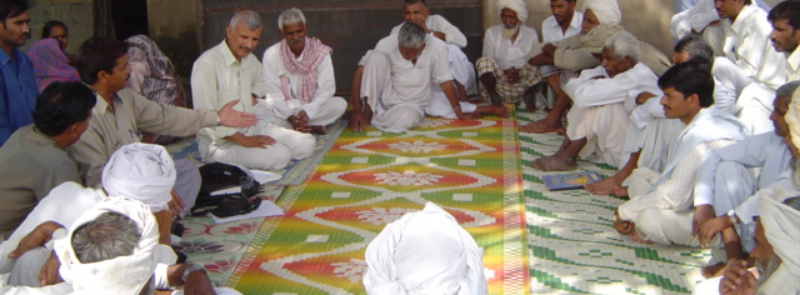
When It Occurs
Every April 24th
Timeline
Days Passed (934)
# Hashtags
#NationalPanchayatiRajDay #SelfGovernmentDay
Annually observed on April 24th, National Panchayati Raj Day in India marks the establishment of the Panchayati Raj System in the country. The system gained constitutional recognition in 1993 with the enactment of the 73rd Constitutional Amendment Act.
The Ministry of Panchayati Raj oversees the celebrations, and this day is alternatively referred to as National Local Self-Government Day. Balwant Rai Mehta is widely recognized as the architect of Panchayati Raj in India.
Significance of National Panchayati Raj Day
- Decentralization of Power: The Panchayati Raj system aims to decentralize governance by transferring powers and responsibilities from central and state governments to the village level. This system allows rural communities to manage their own affairs.
- Recognition of Local Governance: The day honors the vital role that Panchayats (village councils) play in decision-making, local administration, and implementing government schemes, especially in rural areas.
- Grassroots Democracy: It reflects the importance of grassroots democracy, enabling direct participation of rural citizens in governance through elected representatives.
History of Panchayati Raj in India
- Traditional Roots: The Panchayat system has existed in India for thousands of years, serving as informal village councils that made decisions on local issues.
- Post-Independence Era: After independence, efforts were made to formalize the Panchayati Raj system. In 1957, the Balwant Rai Mehta Committee recommended the establishment of three-tier Panchayati Raj Institutions: the Village Panchayat, Panchayat Samiti at the block level, and Zila Parishad at the district level.
- 73rd Constitutional Amendment (1992):
- The 73rd Amendment to the Constitution gave constitutional status to Panchayats and laid the foundation for the modern Panchayati Raj system.
- It mandated the establishment of Panchayats at three levels: village, intermediate, and district.
- The amendment also ensured reservations for Scheduled Castes (SCs), Scheduled Tribes (STs), and women in Panchayat elections, fostering inclusivity and participation of marginalized communities.
- April 24, 1993, marked the official implementation of this amendment, which is why National Panchayati Raj Day is observed on this date.
73rd Constitutional Amendment: Key Features
- Three-tier system: Panchayati Raj Institutions were established at three levels:
- Gram Panchayat (village level)
- Panchayat Samiti (block level)
- Zila Parishad (district level)
- Regular Elections: It provided for regular elections every five years to elect members of the Panchayats.
- Reservation of Seats: It ensured reservation of seats for SCs, STs, and women (33% of seats) in Panchayats.
- Gram Sabha: It recognized the Gram Sabha (village assembly) as a direct democratic body that acts as a forum for people to voice their concerns and suggestions.
- Devolution of Powers: The amendment empowered state governments to delegate specific powers, functions, and responsibilities to Panchayats in areas such as agriculture, education, health, and rural development.
Objectives of Panchayati Raj System
- Empowerment of Rural Areas: To bring governance closer to rural populations by empowering them to take decisions on local development and welfare.
- Inclusive Governance: Ensure participation of marginalized groups, including women, SCs, STs, and Other Backward Classes (OBCs), in governance.
- Social and Economic Development: Strengthen rural infrastructure, improve service delivery, and promote socio-economic development in villages.
- Accountability and Transparency: Encourage accountable governance through regular Gram Sabha meetings and local oversight of projects.
Celebrations and Events
- Ceremonies and Awards:
- On National Panchayati Raj Day, the Prime Minister or the Union Minister for Panchayati Raj addresses the nation, highlighting the progress and challenges in rural governance.
- Awards like the Deen Dayal Upadhyay Panchayat Sashaktikaran Puraskar and the Nanaji Deshmukh Rashtriya Gaurav Gram Sabha Puraskar are given to Panchayats that have excelled in their work.
- Workshops and Conferences: National and regional-level conferences are organized to discuss ways to improve local governance, address challenges, and promote the effective functioning of PRIs.
- Awareness Campaigns: Public awareness campaigns are held to educate rural populations about their rights and responsibilities under the Panchayati Raj system.
Impact of Panchayati Raj System
- Empowerment of Women: With the reservation of seats for women, millions of women have entered local governance, playing a significant role in decision-making and local administration.
- Rural Development: Panchayats have been instrumental in implementing rural development schemes such as MGNREGA (Mahatma Gandhi National Rural Employment Guarantee Act), Swachh Bharat Mission, PMAY (Pradhan Mantri Awas Yojana), and others.
- Local Accountability: By allowing citizens to directly participate in local governance through Gram Sabhas, Panchayats have improved accountability and responsiveness to the needs of rural populations.
- Community Development: Panchayats have played a vital role in the development of rural infrastructure, including roads, schools, healthcare centers, and sanitation facilities.
Challenges of the Panchayati Raj System
- Lack of Financial Resources: Panchayats often face a shortage of funds, which hampers their ability to implement development programs effectively.
- Capacity Building: Elected Panchayat members, especially women and first-time leaders, sometimes lack the necessary training and experience to manage local governance effectively.
- Interference from Higher Authorities: In some cases, the autonomy of Panchayats is undermined by interference from state or district-level officials, limiting their ability to function independently.
- Corruption and Mismanagement: Some Panchayats have been plagued by issues of corruption, misallocation of resources, and inefficiency in implementing welfare programs.
Conclusion
National Panchayati Raj Day serves as a reminder of India’s commitment to decentralized governance and the empowerment of rural communities. It recognizes the role of Panchayats in shaping the future of India’s villages, improving the quality of life in rural areas, and promoting inclusive, participatory governance. While there are challenges, the Panchayati Raj system has made significant strides in strengthening democracy at the grassroots level.


